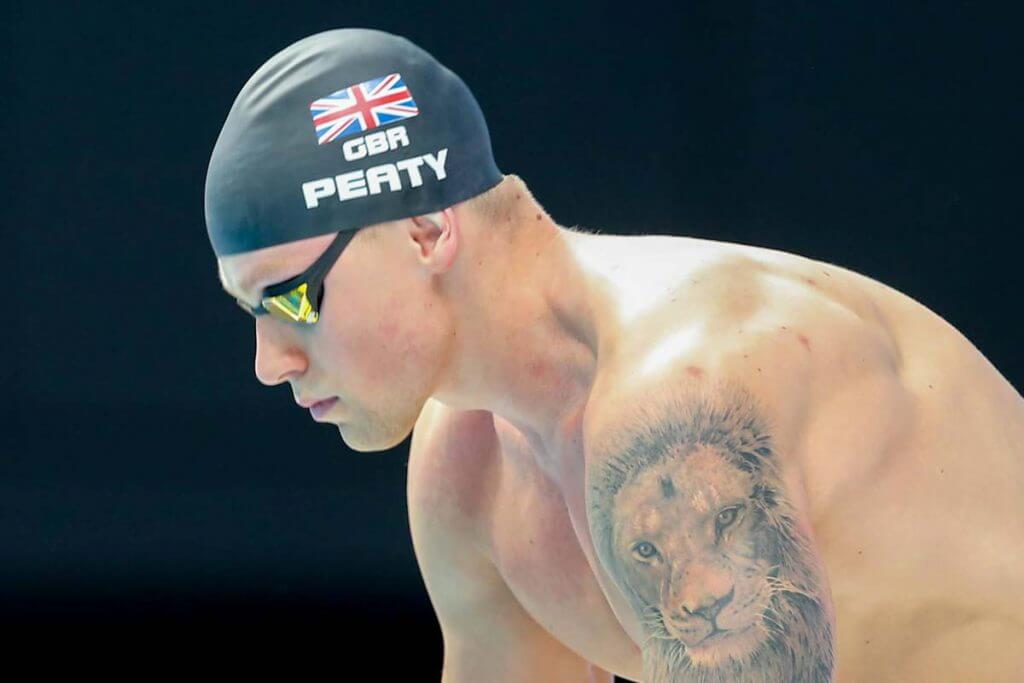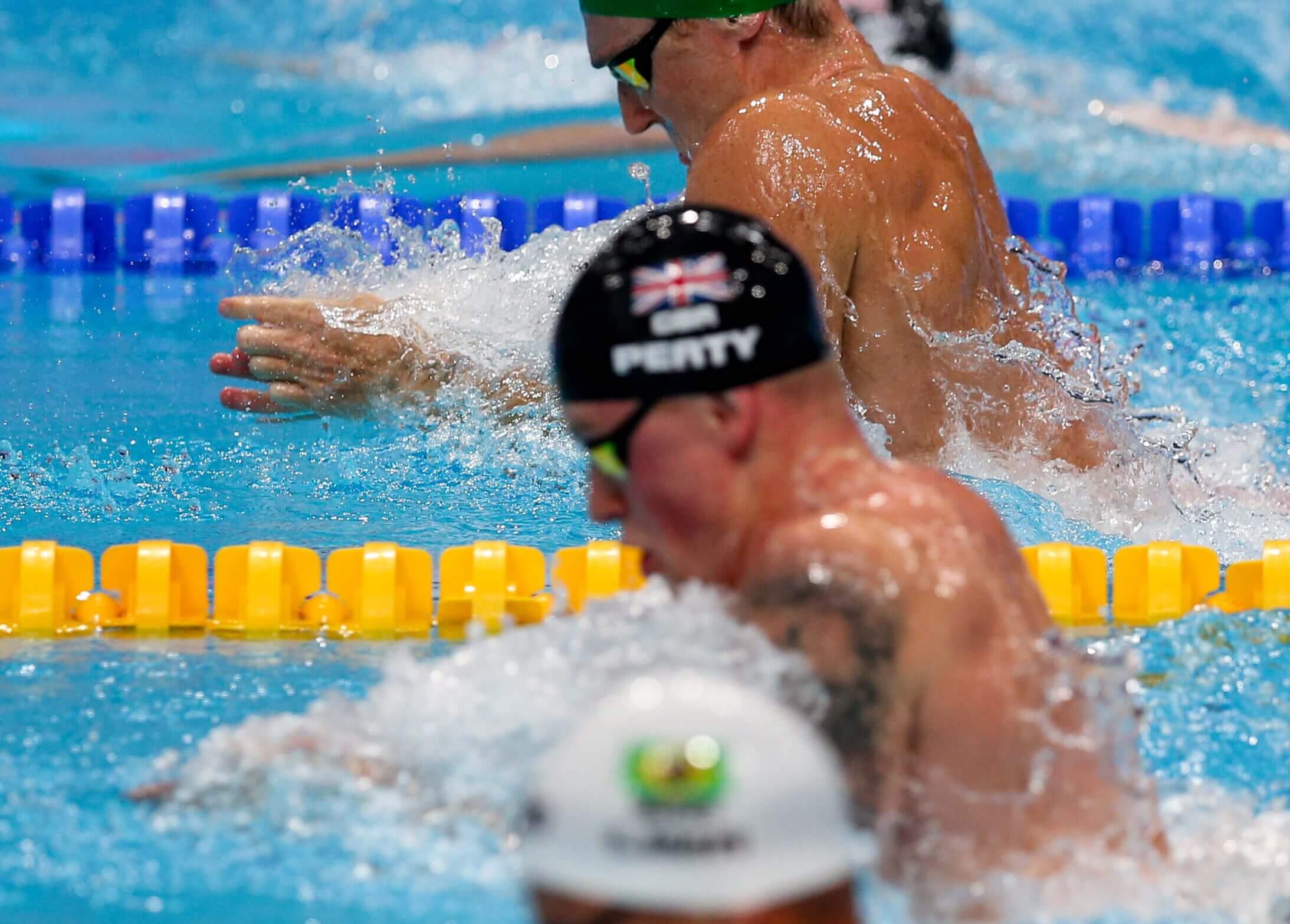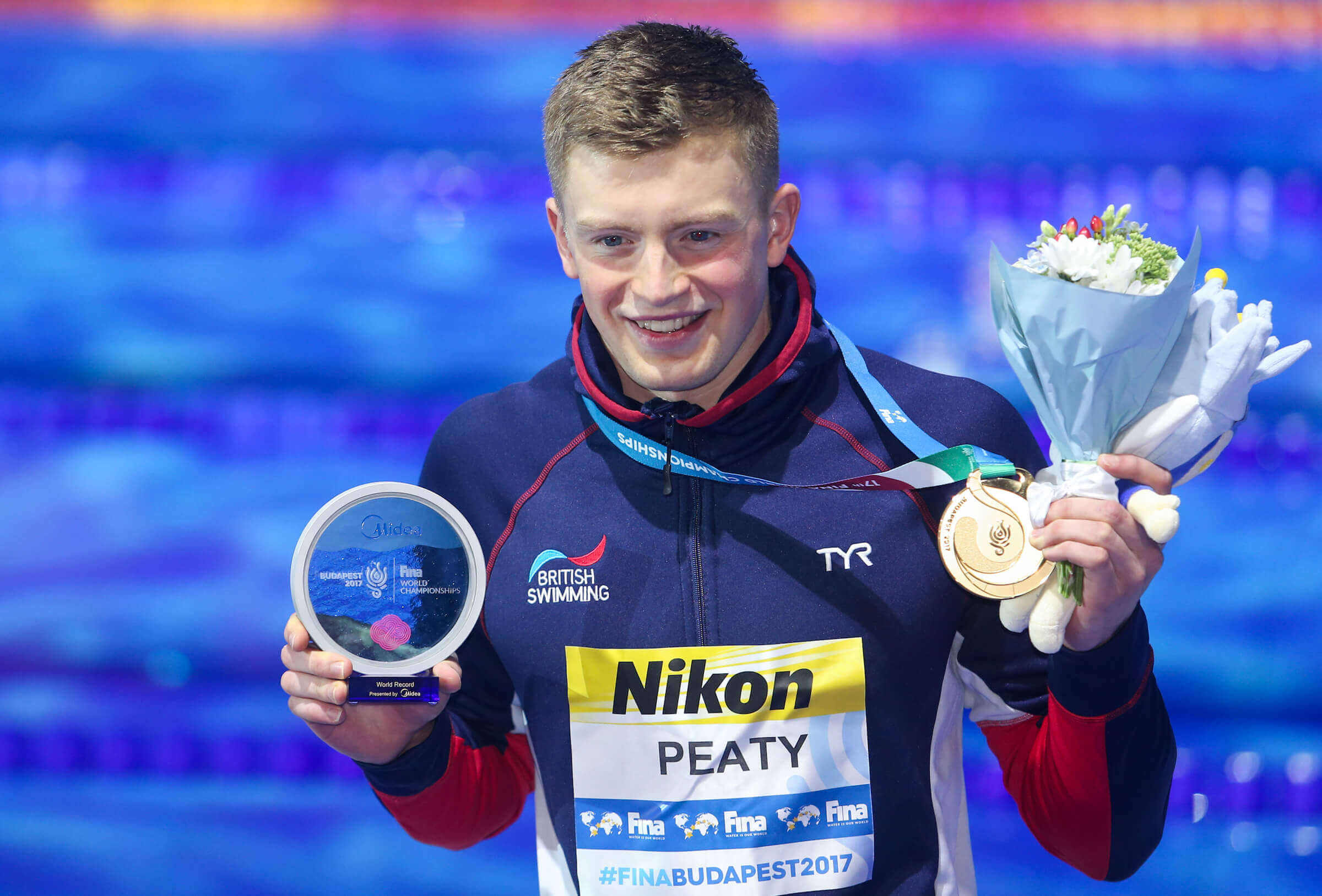Adam Peaty’s Vision for the Future of Swimming

By David Rieder.
Adam Peaty isn’t at the Short Course World Championships, going on this week in China. Last month, when he announced his commitment to the now-cancelled Energy for Swim, he declared that he would skip Short Course Worlds. And even now, he has no regrets about his decision.
“It’s only Short Course Worlds,” he said. “It’s not a big thing to me. Short course is pretty much dead to me. I don’t really care. People can do what times they want, but I know some of them can’t convert to long course.”
Having been one of the sport’s most successful performers over the past five years, Peaty is well within his rights to swim at whatever meets he wants. At this point in his career, he has zeroed in on his main ambitions in the pool—hitting certain times and winning gold medals at upcoming major long course events like next year’s World Championships in Korea or the 2020 Tokyo Olympics.

Photo Courtesy: SIPA USA
Similarly, Peaty has certain causes he is willing to throw his support behind. Even though the Energy for Swim was to be a short course meet, he intended to be there to validate a cause that he has championed since its inception.
Peaty believes in the International Swim League—and he has made no secret of that support. He feels that swimming needs a “commercial rejuvenation.” He called FINA’s World Cup series “embarrassing.” He discussed FINA prize money, recently doubled for this edition of Short Course Worlds but still, in Peaty’s eyes, not enough to support professional careers for any except the very best.
So what are the big changes, the grand vision Peaty has for swimming? A team-based professional league. He believes that ISL’s vision is compatible with his and that FINA, when presented with new and innovative ideas, continually will not listen.
“Look at cycling. Look at where that was 20, 30 years ago. You get professional teams doing road races now, and people are watching it,” Peaty said. “If you have an actual team-based league and actual commercial partners behind it, you will sell more, and it will be on TV.”
In multiple statements defending its disallowance of the Energy for Swim, FINA argued that it has the responsibility to maintain swimming’s international competition calendar. After three elite swimmers filed an antitrust lawsuit against FINA, the organization said, “Changes to the calendar, received on short notice, are not consistent with FINA’s long-standing agreements and precedents, and undermine existing high-level competitions.”
FINA President Julio Maglione weighed in as well, telling insidethegames, “We ruled that the (Energy for Swim) was an international competition, which it very obviously was. The calendar for international competitions does need to be carefully thought out.”
Peaty is in favor of blowing up that international calendar entirely, keeping some of the big events while populating the year with new team-based competitions—which in turn would give swimmers who aren’t the perennial medalists more of a chance to make it as pros.
“For the last 25 years, it’s pretty much been the same,” Peaty said. “You go to a Commonwealth Games, you go to the European Championships, you go to the World Championships, you go to the Olympics, and that’s it, really. And then you’ve got the World Cups as well. I think the sport is worth more than that. Swimmers work way too hard to have one or two races a season. I think the more races, the more the sport’s going to grow, and the more money that’s involved, the more kids will look up to that as a future career.”
His dream model includes four significant international meets over the course of the season, in January, March, April and June, followed by the World Championships in August. Unlike the current FINA World Cup, the meets would not come directly after the summer’s championship meets (when Peaty believes athletes don’t want to race), and all of these meets would be long course “so they’re relevant in a four-year cycle.”

Photo Courtesy: SIPA USA
Peaty believes that with the right publicity, timing and format, these meets would hold prestige, and thus, athletes would show up.
And how would he respond to a swimmer or coach who argues that such a cycle of meets would interrupt training cycles and the typical process of tapering for one championship meet per season?
“If you have racing all year round, I guarantee you people will get faster. Especially if they’re racing for prestige and they’re racing for money, they will get faster,” he said.
“Look at the Premier League in football over here. Most of those footballers now, they have a massive, massive preseason where they get their fitness, they get their gains, and then they’ll just maintain. They’ll push on mid-week or at the start of the week until the next game, and that’s where the excitement kicks in. Who can recover the best, who can train the best, and who can race the best? There’s a lot of science behind it. I think that’s a lot more exciting than waiting once a year for people to swim their best.”
Of course, this is just one man’s idea. Peaty’s vision for what the ISL could (should?) become was not the plan for the 2018 meet that morphed into the Energy for Swim. It’s not necessarily what every proponent of a professional swim league is looking for. For instance, other top swimmers have indicated they would prefer some short course meets or even all short course meets in such a series.
But plenty of them—Peaty, Cate Campbell, the trio suing FINA—agree that the sport needs to change. Peaty has his reasons for pushing for such changes, and they aren’t all so altruistic.
“When you go in year to year with the same format and the same race model, it’s just boring. There needs to be more events, more adrenaline, just bigger events. There needs to be more of everything,” Peaty said. “I don’t want to be sitting here in eight years’ time doing exactly the same thing I’m doing now. I believe the sport becomes stagnant after a while.
But Peaty also knows that his success, his world records and gold medals, have given him a voice, and he wants to use that voice to provide a better situation for future swimmers in his position, so that they don’t have to deal with an organization trying to “monopolize the sport” without seriously taking athletes’ issues into account.
“I don’t think anyone should own the sport. I think that’s wrong, and I think that’s what FINA are trying to do right now,” he said. “I want to show the future generation not to be scared or bullied by someone who is meant to be big but they’re actually not.”





Sam Lawman Joe Stott Rich Ayre
He envisions swimming for East Leeds I’ve heard now we have national reputation
Joe Stott he is a great Role model who wants to see change in swimming more money more motivation